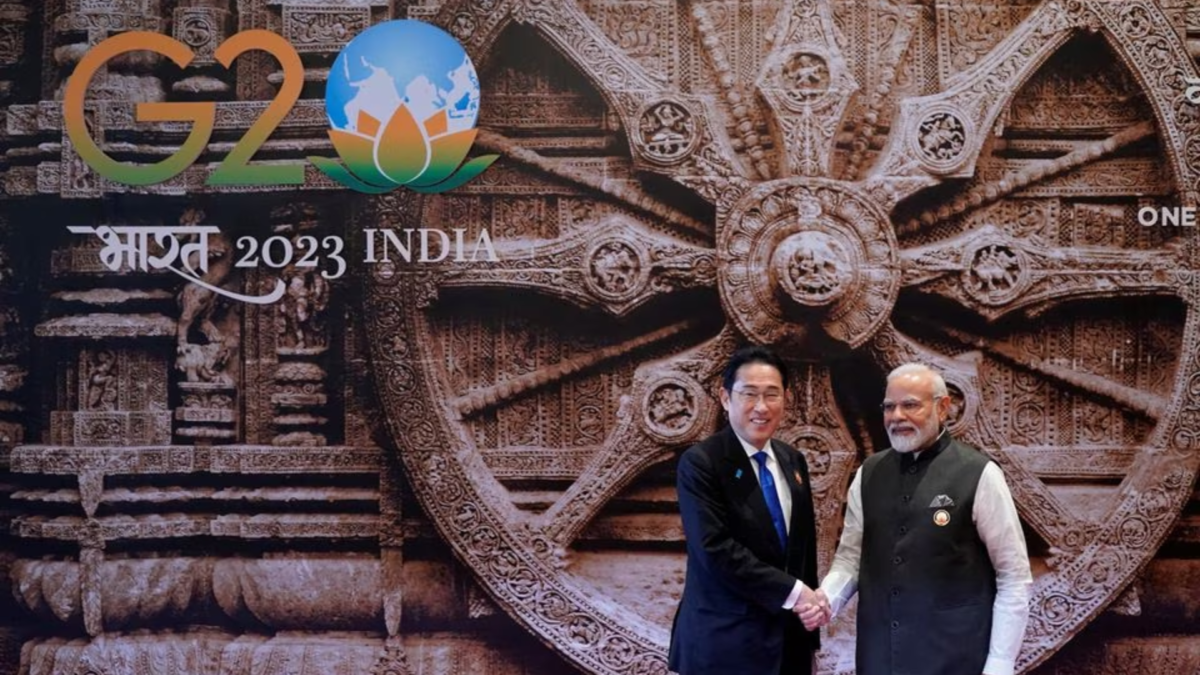In the dynamic landscape of international relations, India and Japan continue to solidify their friendship, with both nations extending their collaborative efforts in different dimensions. These two Asian giants, known for their historical and cultural ties, are now navigating new avenues for cooperation, fostering bonds that stretch from the Indo-Pacific to the heart of Central Asia.
Indo-Japanese Investment Fund
In a recent development that underscores the deepening ties between India and Japan, the National Investment and Infrastructure Fund of India (NIIF) has announced its collaboration with the Japan Bank for International Cooperation (JBIC). Together, they are setting up a remarkable $600 million investment fund. This joint endeavor is a testament to the commitment of both governments to strengthen financial relations in tandem with their growing geopolitical alliance. The fund will primarily focus on India’s environmental preservation sector, including renewable energy, e-mobility businesses, and projects related to waste management and water. The Indian government will contribute 49%, while JBIC will provide the remaining 51% of the 49 billion rupees ($589 million) fund.
Meeting India’s Growing Infrastructure Needs
India finds itself at a crucial juncture, needing substantial investments to upgrade its infrastructure and transition to cleaner energy sources. Experts estimate that the country requires a staggering $350 billion in power generation investments over the next decade to meet its ever-increasing energy demands. The collaboration with NIIF offers a unique opportunity for Japanese lenders, known for their access to low-cost funding due to Japan’s accommodative monetary policies, to seek profitable ventures abroad.
Japanese Companies Eyeing Expansion in India
Notably, Japanese companies are increasingly seeking to expand their presence in India, particularly in light of the country’s status as one of the largest emerging markets in the Asia-Pacific region. Companies that have yet to establish a foothold in India are actively seeking reliable partners. This renewed interest follows past investment disputes, such as Nippon Telegraph and Telephone and Daiichi Sankyo’s investments that led to international legal proceedings. Consequently, the number of Japanese companies operating in India is on the rise, suggesting a promising outlook for future collaborations.
A Promising Partnership Beyond Borders

The cooperation between India and Japan extends beyond their respective shores. As the second and third-largest steel producers globally, both nations depend on coal, primarily sourced from China and Russia, for alloy production. Sajjan Jindal, Chair of India’s JSW, has expressed interest in bidding, alongside Japanese and South Korean mills, for Canada’s Teck Resources coking coal unit, a venture potentially worth $8 billion. This potential alliance demonstrates the benefits of a successful commodities partnership, as exemplified by Nippon Steel’s collaboration with ArcelorMittal in acquiring India’s Essar Steel in 2018, followed by the acquisition of captive port and power assets in 2022.
Central Asian Friends: The Indo-Japanese Strategy
Six months ago, a separate but equally vital aspect of India and Japan’s partnership began to emerge. The two nations, united by their shared values and mutual interests, have been actively engaging in the Central Asian region. The India–Japan Summit held during that period reinforced their cooperation in areas spanning security, defense, and economic initiatives. This approach was part of the broader strategy to create a ‘Free and Open Indo-Pacific,’ aimed at offering alternatives to China’s expanding influence.
Eurasian Diplomacy and Geopolitical Balance

Japan’s former Prime Minister, Shinzo Abe, envisioned the ‘Free and Open Indo-Pacific’ strategy, which encompassed Central Asia, an area of immense strategic importance. However, the continental aspect of Japan’s Asian strategy did not gain much traction at the time. Japan’s current Prime Minister, Fumio Kishida, is committed to expanding Japan’s influence in Central Asia, aligning with the recent trend of strengthening ties with the global south. In a region traditionally within Russia’s sphere of influence, the growing demand for resources has led to increased competition, with China steadily expanding its regional security footprint.
Central Asia’s Quest for Alternatives
The ongoing crisis in Ukraine has amplified Russia’s dependence on China, as Beijing increasingly supplies goods and resources to Moscow, deepening the political and economic ties between the two nations. Central Asian countries, traditionally in a position to play off both China and Russia, are now actively seeking new partners to balance the shifting dynamics between these two major powers.
Expanding Engagement and Economic Diversification

Central Asian nations, including Kazakhstan, Turkmenistan, and Uzbekistan, are looking to diversify their economies away from energy revenue. In this context, a partnership with India and Japan holds significant promise. Joint public and private sector development initiatives and investments in the energy sector, encompassing natural gas, oil, uranium, and rare earth minerals, can aid these countries in hedging against China’s increasing influence. Additionally, such projects are in line with the global focus on building reliable and resilient supply chains, providing economic opportunities for both India and Japan.
A Diversified and Balanced Strategic Policy
India and Japan’s security and economic objectives align them favorably to engage more deeply with Central Asia. A shared outlook for the region offers a strong foundation for Central Asian countries to pursue a diversified and balanced strategic policy, strengthening their independence from China and Russia. The friendship between India and Japan is a beacon of hope in a world where collaboration and unity are vital to addressing the complex challenges of our time.

India and Japan are emerging as a formidable “power couple” in Asia, extending their influence from the Indo-Pacific to Central Asia. Their strengthened financial ties and collaborative ventures promise a prosperous future for both nations. At the same time, their active engagement with Central Asia provides an essential counterbalance to the evolving dynamics in the region. The world watches with anticipation as this friendship continues to evolve, fostering strategic and economic cooperation that benefits not only these two nations but also the broader Asian continent.



